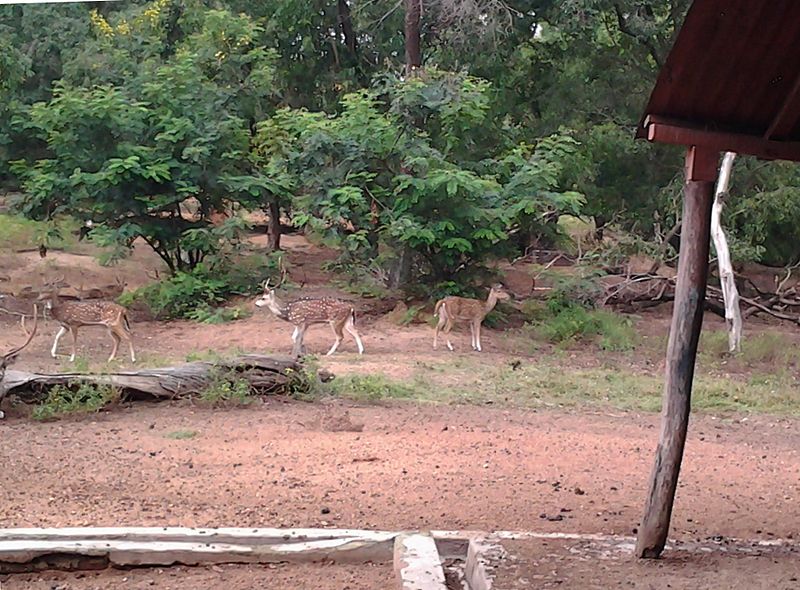Shantiniketan
The Abode of Gurudev Tagore
General Information
Other Name: Visva Bharati University, District: Birbhum, State: West Bengal, India
Area: 0
Languages Spoken: Bangla, English
Long Distance Code: -
Importance: -
Best Time to Visit: January to December and Throughout the Year
International Access: -
Description
“Cargo of my life's best treasure”, is how the great poet and a Nobel laureate, Rabindranath Tagore described Shantiniketan. Established in 1863 by his father, Debendranath Tagore, Rabindranath Tagore started experimental open-air classes for students in 1901 and called it Shantiniketan or the Abode of Peace. Gurudev Tagore developed this small school for five students to a huge educational institution of international repute and called it Vishwa Bharati University. Tagore’s vision was a world where man exists in perfect harmony with nature. Shantiniketan is the embodiment of serenity and peace, far removed from the concrete jungle. His motto was to teach one and all blending the east into west and putting the students nearer to nature with all the latest knowledge. He also expected that the knowledge and education from this University would be distributed by the students to the rural area of India. Nearly 220 km from Kolkata, Shantiniketan is the most famous and easily accessible tourist destination of west Bengal. Various courses including science and fine arts are taught in natural environments. The institute has a legacy of great students which include, Gayatri Devi, Maharani of Jaipur, Late Prime Minister of India, Ms. Indira Gandhi, Late Film maker Satyajit Ray and also the Nobel Laureate Amartya Sen. Some buildings worth a visit on the campus are the Uttarayan Complex where the great poet lived, the Bichitra Bhavan designed by his son and the Rabindra Bhavan that houses a research institute and a museum. The best time to visit Shantiniketan is the time when the University celebrates the festivals unique only to Shantiniketan. The Poush Mela is a winter fair held in December which commemorates beginning of open-air classes at Shantiniketan. Poush celebrations at Shantiniketan feature the main Tagore art forms - dance-drama, music, literature and art. The fair has extensive displays of folk arts and crafts. Its theme is a blend of Birbhum's Adivasi-Santhal and Baul folk and tribal cultures, alongside Tagorean innovations in art and culture. The Vasantotsav held around the mid March is another festive time when spring is welcomed with cultural programmes and pageants of colour, giving a vibrant look to the whole of Shantiniketan.Location
180 kilometers from Kolkata, the capital of West Bengal in the district of Birbhum. Shantiniketan is located at 23.68°N 87.68°E. It has an average elevation of 56 metresClimate
The weather in Santiniketan is usually a pleasant one although you will come across the normal weather changes during summer, winter and Monsoon. Nonetheless Spring has its own charm in Santiniketan not only because of its natural beauty blooming to its fullest amidst the lush greenery but also due to the famous Vasanta Utsav held to mark the festival of Holi with the onset of Spring. Santiniketan can be visited at any time of the year. The climate is moderately warm.
It is also called Rabindra Bhavan, a Research Centre and Museum where the poet's personal belongings, paintings & various editions of his works are exhibited. It is designed by the Rabindranath Tagore's son Shamindranath Tagore.The replaced nobel prize is also kept there.
Gurudev was the pioneer for the modern Sino - India relations. Gurudev was invited for lectures all around China in 1924. his lectures were liked by one and all. Attending those lectures was the young man Tan Yun Shan who offered his services to Gurudev. Gurudev later invited him to come to Shantiniketan and develop a chinese study centre here.
This study centre is known as the China Bhawan. Even today students are taught the language here by dedicated teachers.
Natir Puja, a dance drama of Tagore is painted on its wall under the guidance of famous painter Nandalal Bose.
This study centre is known as the China Bhawan. Even today students are taught the language here by dedicated teachers.
Natir Puja, a dance drama of Tagore is painted on its wall under the guidance of famous painter Nandalal Bose.
The 2 storied building was the residence of the great Nobel Laureate Gurudev Rabindranath Tagore and his wife Mrinalini Devi.
One of the most beautiful halls in the Shantiniketan is the Upasana Griha or the Prayer hall. Originally built by father of Gurudev Rabindranath Tagore, Shri Debendranath Tagore in 1863, this prayer hall is also known as the Kanch Mahal. Kanch mahal means palace of mirrors in the local language. The hall is made of several coloured Belgium glass with marble steps on all the four sides.The poush seventh of Bengali calendar, generally 23rd Dec in English calendar, is observed here as the memorial date of the event of Tagore's father Maharsi Debendranath's transformation to Bramho religion from Hinduism. This very date is the commencing date of Poush Mela for every year.
The museum housed in the Bhavana, comprising of a permanent display section and the five homes lived in by Tagore, collectively referred to as the Uttarayan Complex, attracts thousands of visitors. The architecture of the houses, the interior decoration, the pieces of furniture strewn about the rooms bring to life the persona of Tagore. This unit of Rabindra-Bhavana has 1580 original paintings of Rabindranath and 554 by others. The photograph collection (11380), the curio collection (3855) and 52 statues. The collection of addresses and certificates also form important sections of this unit. A detailed and descriptive list of the paintings and their items in the museum unit has been serially published in the Catalogue-in-progress. An important aspect of Bhavana activities is to mount exhibitions in 'Vichitra'. Drawing upon its own rich collection of photographs and other memorabilia, exhibitions depicting different themes from the poet's life, are held regularly throughout the year.
Closed On: Wednesday
Closed On: Wednesday








